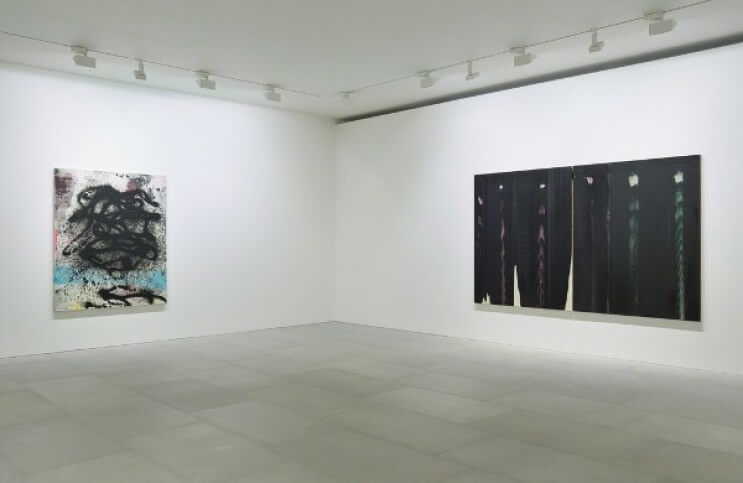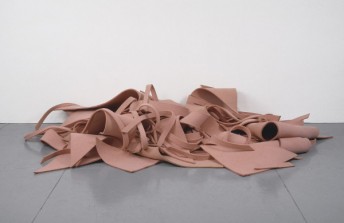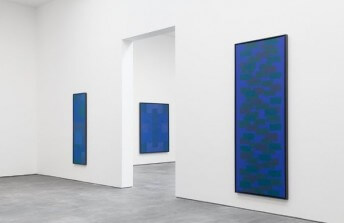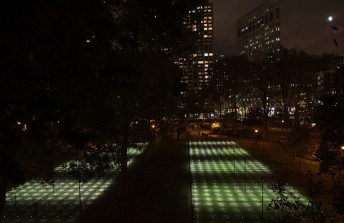LA Art Scene Legend Ed Moses Dies at 91
Jan 24, 2018
Ed Moses, pioneer of the California avant-garde, died peacefully on 17 January 2018, in his Venice Beach home, surrounded by family. Many people today do not know who Moses was. Or if they know the name, they cannot visualize his work. That may be because, although he was one of the most prolific and influential painters of his generation, he was also one of the most elusive. Moses never called himself a professional artist. He left that designation to those who nurtured specific aesthetic positions in response to market demands. He saw himself as someone who just loved to paint. He prized freedom and experimentation, and was completely open while working. He saw the journey toward discovery as the most interesting part of making art. Even when he arrived at a style that was popular with buyers, Moses changed what he was doing, in search of his next journey. As a result, his oeuvre is so diverse it is often difficult even for those who knew him to identify whether a work is his. That is one reason the name Ed Moses is often left out of art history books. Art history is told mostly from the perspective of the art market. Most money flows to instantly recognizable works made by people with easy-to-tell life stories. Moses did not fit either category. His life story was often as messy and unpredictable as his art. But though he never achieved proper recognition while alive, he created a fertile legacy that has not even begun to bloom. He is an example to artists who are intent on discovering more than their market potential. He is proof there is an art world within the art world, which supports a thriving population of renegades committed to being imaginative and free.
Wild at Heart
When Ed Moses died, his wife Avilda Peters, was by his side. She had married Moses twice. The first time was in 1959. After 17 years, the couple divorced. They remarried in 2015. Moses once told The Los Angeles Times the cause of their divorce was his own “madness.” A look at his path toward becoming an artist sheds light on what he meant. Moses learned young that life is unpredictable and unforgiving. He was the only survivor of three siblings. His parents lived in Hawaii. Their oldest son died before Ed was born. While still pregnant with Ed, his mother left his father and sailed for a new life in California. Moses was born on the ship. Ten years later, his other brother died, at age 14.
Moses dropped out of high school at age 17 and joined the Navy. He served as a medic during the final years of World War, and after leaving the service briefly entertained becoming a doctor. But his intellect was more suited toward creativity than to the structure of med school. In fact, even art school was a bit too rigid for him. It took Moses ten years to earn his Masters Degree in Fine Art, after transferring in and out of various schools. When he finally finished his MFA, he ended his education on his own terms, staging his final thesis show not on campus, as most candidates do, but off-site, at the Ferus Gallery, a then scrappy, new gallery in West Hollywood.
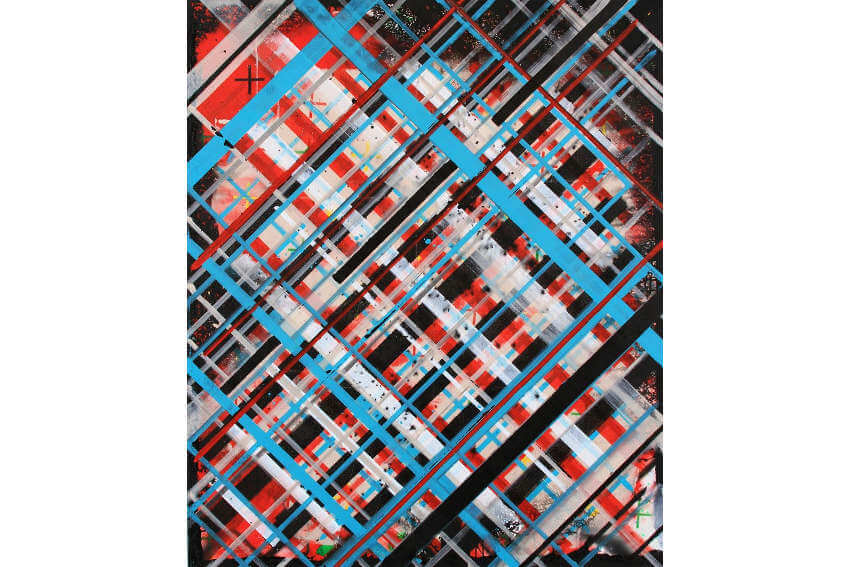 Ed Moses - Cuba #2, 2014-2015, Acrylic on canvas, 52 × 43 × 1 1/2 in, 132.1 × 109.2 × 3.8 cm, William Turner Gallery, Santa Monica, © Ed Moses
Ed Moses - Cuba #2, 2014-2015, Acrylic on canvas, 52 × 43 × 1 1/2 in, 132.1 × 109.2 × 3.8 cm, William Turner Gallery, Santa Monica, © Ed Moses
An Original Stud
Ferus Gallery established the artists associated with the two most influential California aesthetic propositions—the Light and Space Movement, and Finish Fetish. When the gallery opened, it was dedicated to showing art no one else was willing to show. Artists were allowed to do whatever they wanted in the space. And it was gender neutral. The first show included male and female artists, and the first solo show at the gallery was by the female Abstract Expressionist painter Sonia Gechtoff. But shortly after Ferus opened, it became clear that it was not a business model that could sustain itself. The roster of artists was cut. The ones that remained, which included Moses, Craig Kauffman, Robert Irwin, John Altoon, Billy Al Bengston, Larry Bell, and Ed Ruscha, among others, were almost entirely male. They began referring to themselves as The Studs.
By 1966, when Ferus Gallery closed, money was no longer an issue, as many of The Studs had risen to prominence. Because of the experimental nature of his work, Moses remained happily on the fringe. His first significant sales did not come until the 1970s. Even then, when certain bodies of work, such as his resin paintings, became popular with collectors and museums, he switched things up in search of something fresh that could keep his imagination engaged. He once told the Los Angeles Times, “I don't want to do paintings that I can do.” He was more interested in repetitive processes, during which accidental revelations might occur.
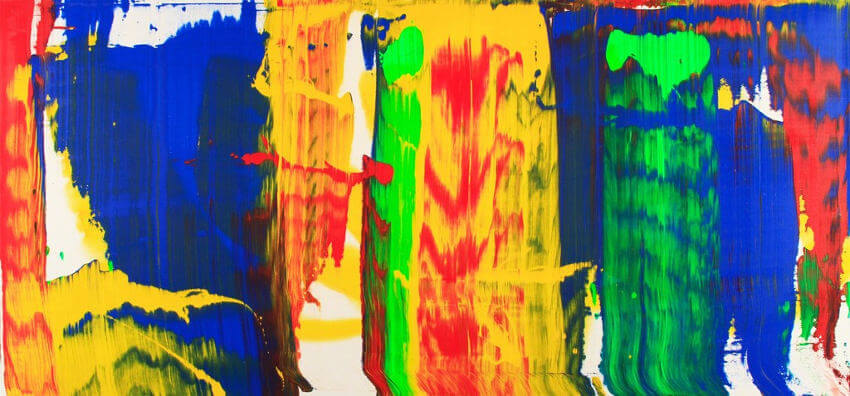 Ed Moses - S Wall #X3, 2016, Acrylic on canvas, 60 × 138 × 1 1/2 in, 152.4 × 350.5 × 3.8 cm, William Turner Gallery, Santa Monica, © Ed Moses
Ed Moses - S Wall #X3, 2016, Acrylic on canvas, 60 × 138 × 1 1/2 in, 152.4 × 350.5 × 3.8 cm, William Turner Gallery, Santa Monica, © Ed Moses
The Cool School
Though his experimental approach may have delayed his fame, Moses was well-known to other artists, and to institutions who embrace the work of avant-garde artists. He received a Guggenheim Fellowship in 1980, and had a retrospectives at the Museum of Contemporary Art Los Angeles. And today his paintings are in the permanent collections of more than 40 American museums, including the MoMA, the Whitney, the Walker Art Center, and the Menil Collection. And he has also left his mark on the broader culture of California, where he is known as the founder of the Cool School.
Moses established the California tradition of avoiding the seriousness and celebrity associated with the New York art scene. Though it is debatable how many of his contemporaries were deserving of the Cool School label, there is no doubt Moses earned it. He remained experimental and prolific until the end of his life. After receiving a pacemaker, he told Artnet in 2016, while preparing for a retrospective in New York, “I’ve been in a wheelchair ever since...but I keep on painting. Every day I invent ways to paint with the materials and tools and space I have, and I have fun doing it.” Aside from the body of masterful abstract art he left behind, that legacy of inventiveness, creativity and fun is what Moses will be remembered for the most.
 Ed Moses - Fruit Bar 3, 2016, Acrylic on canvas, 24 × 30 in, 61 × 76.2 cm, Telluride Gallery of Fine Art, © Ed Moses
Ed Moses - Fruit Bar 3, 2016, Acrylic on canvas, 24 × 30 in, 61 × 76.2 cm, Telluride Gallery of Fine Art, © Ed Moses
Featured image: Ed Moses - First, look at the paintings. Then we’ll shoot the shit, Installation View, 2016, Courtesy the artist and Blain|Southern, Photo: Peter Mallet
All images used for illustrative purposes only
By Phillip Barcio
